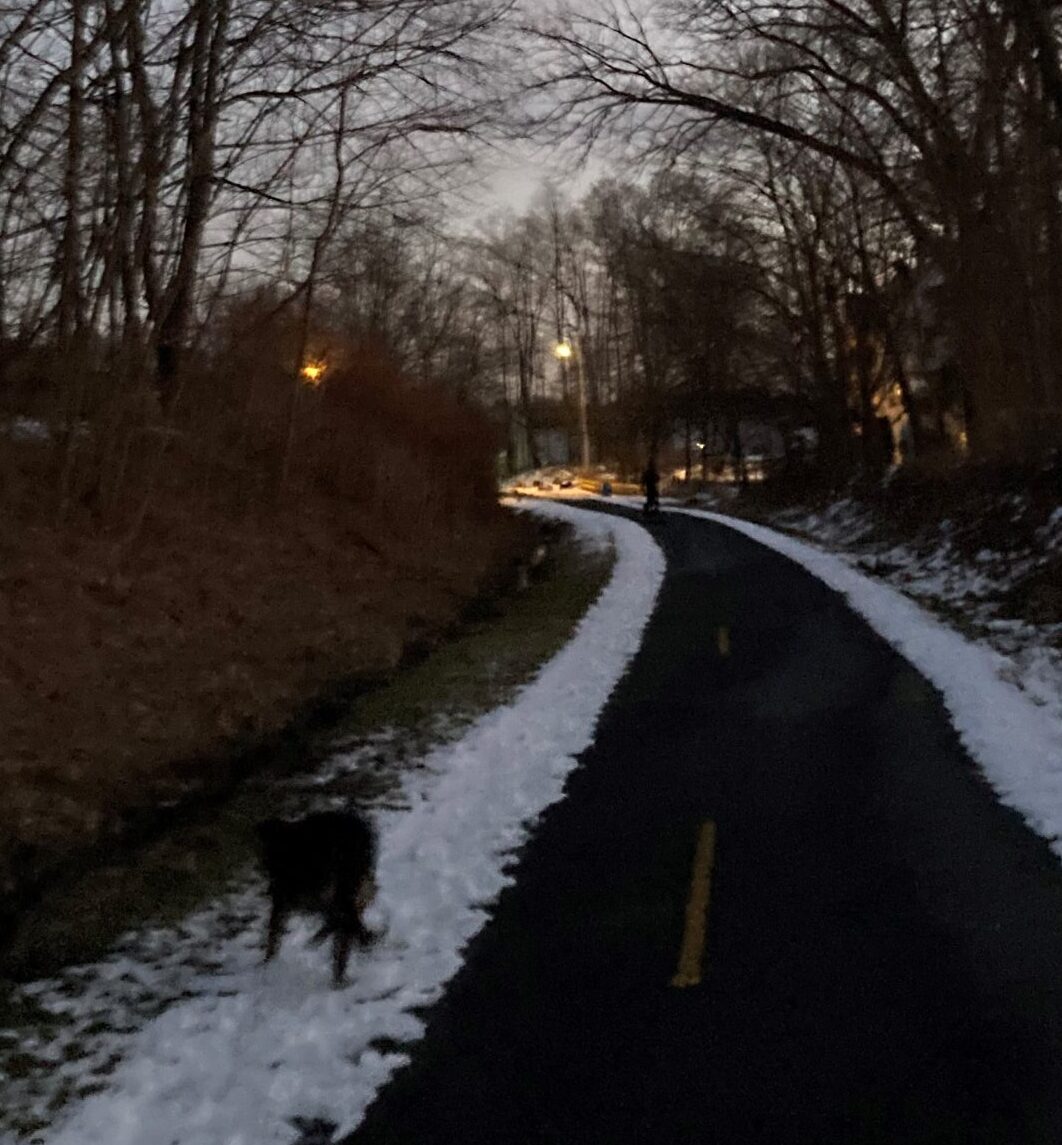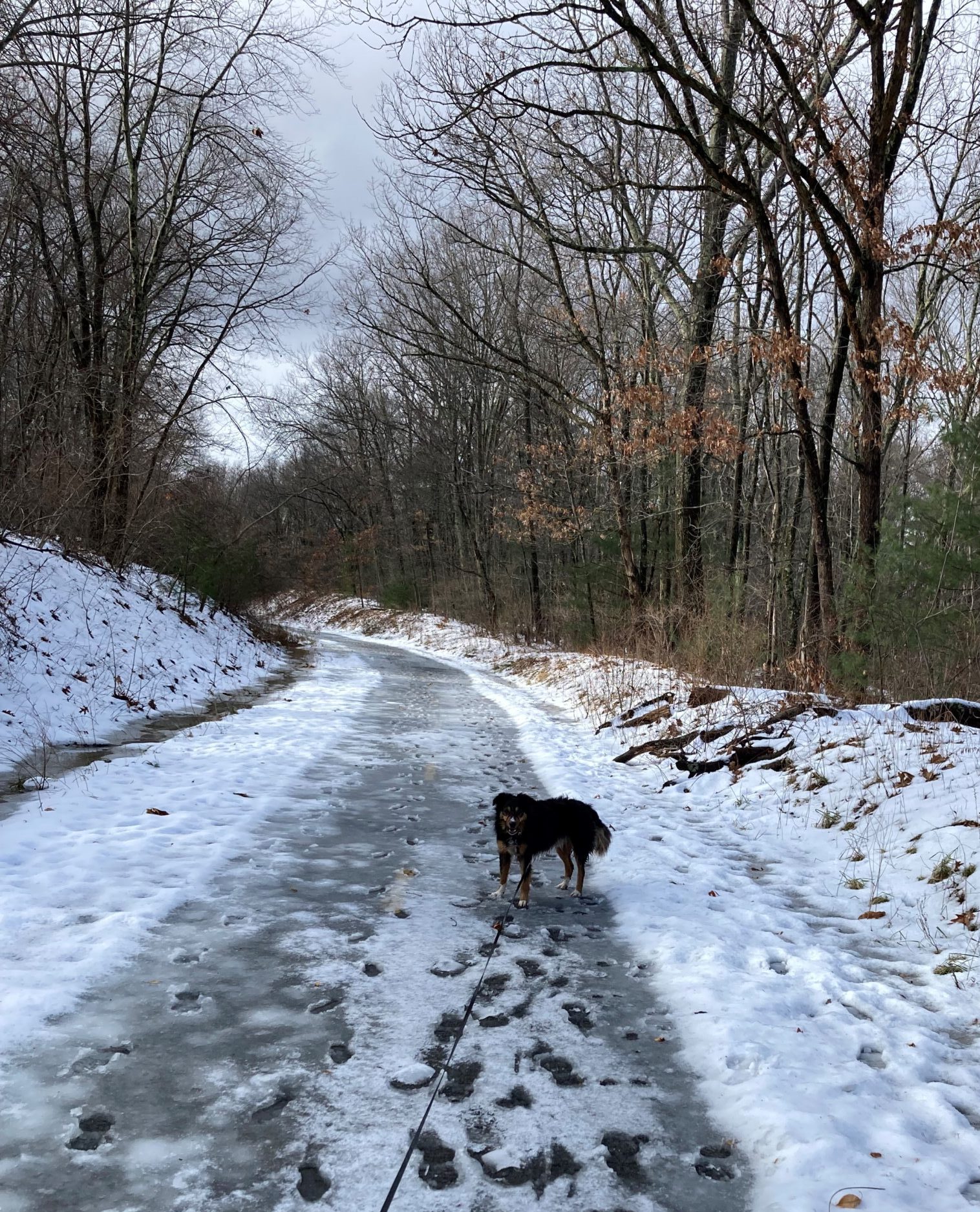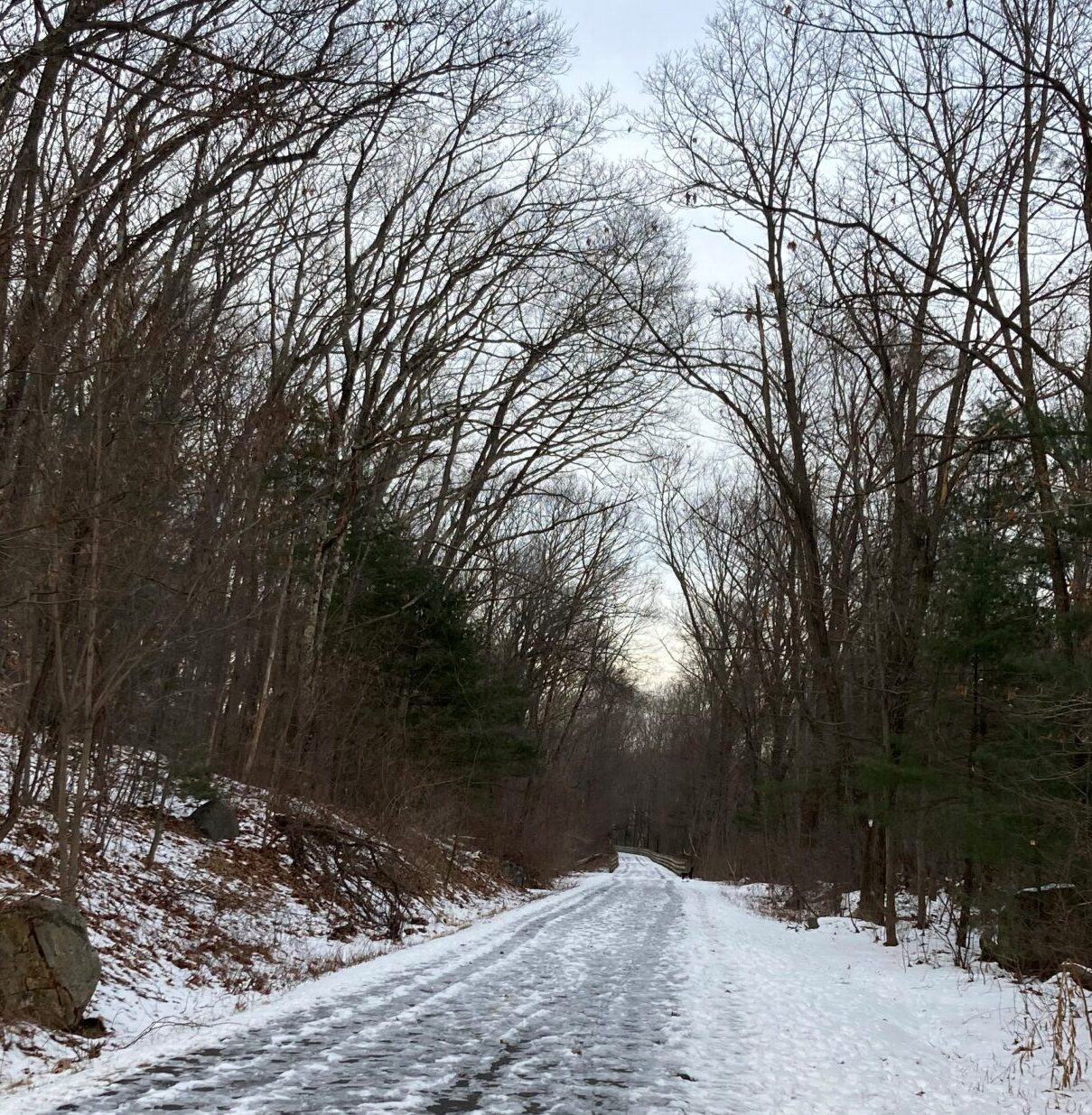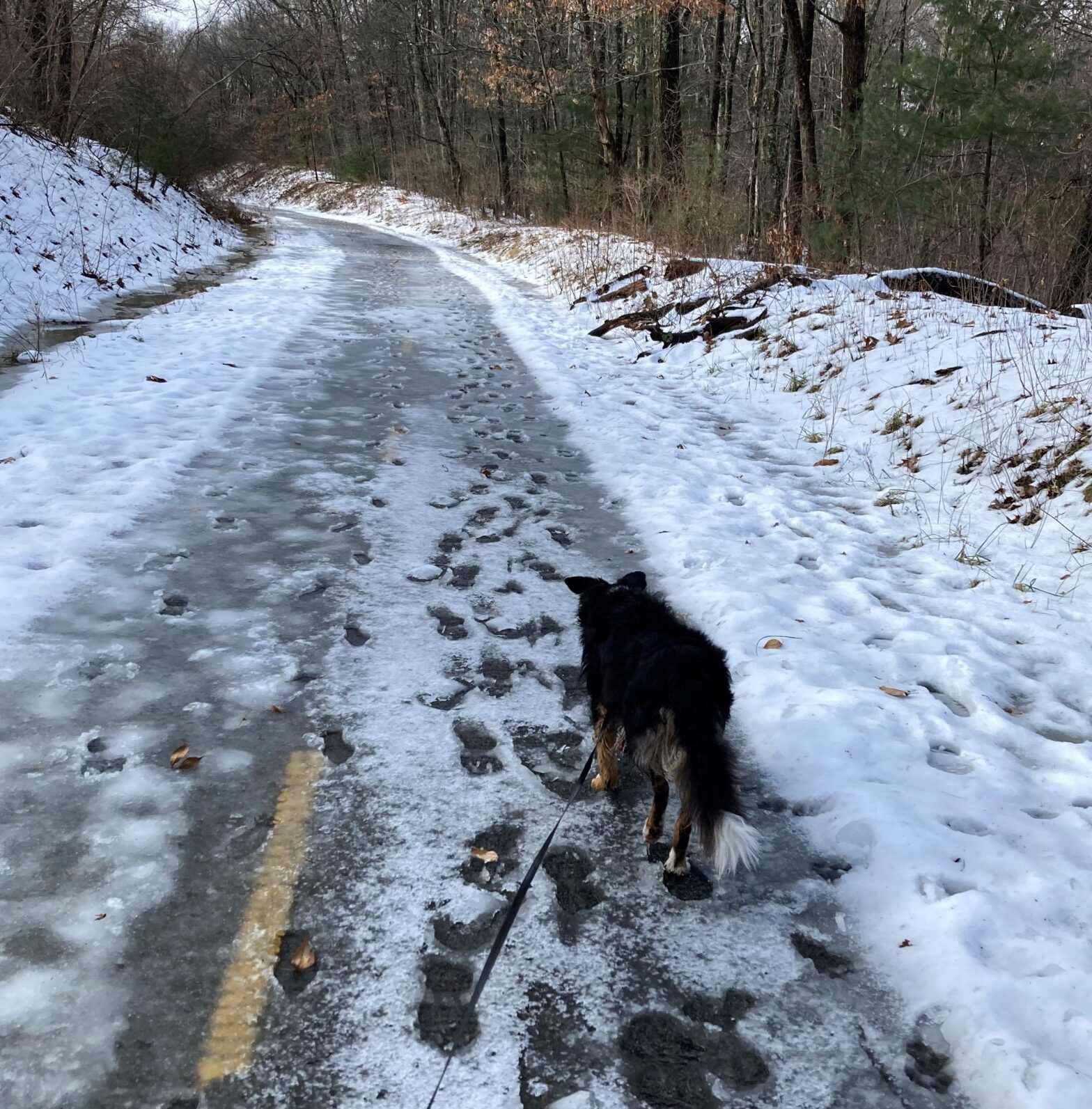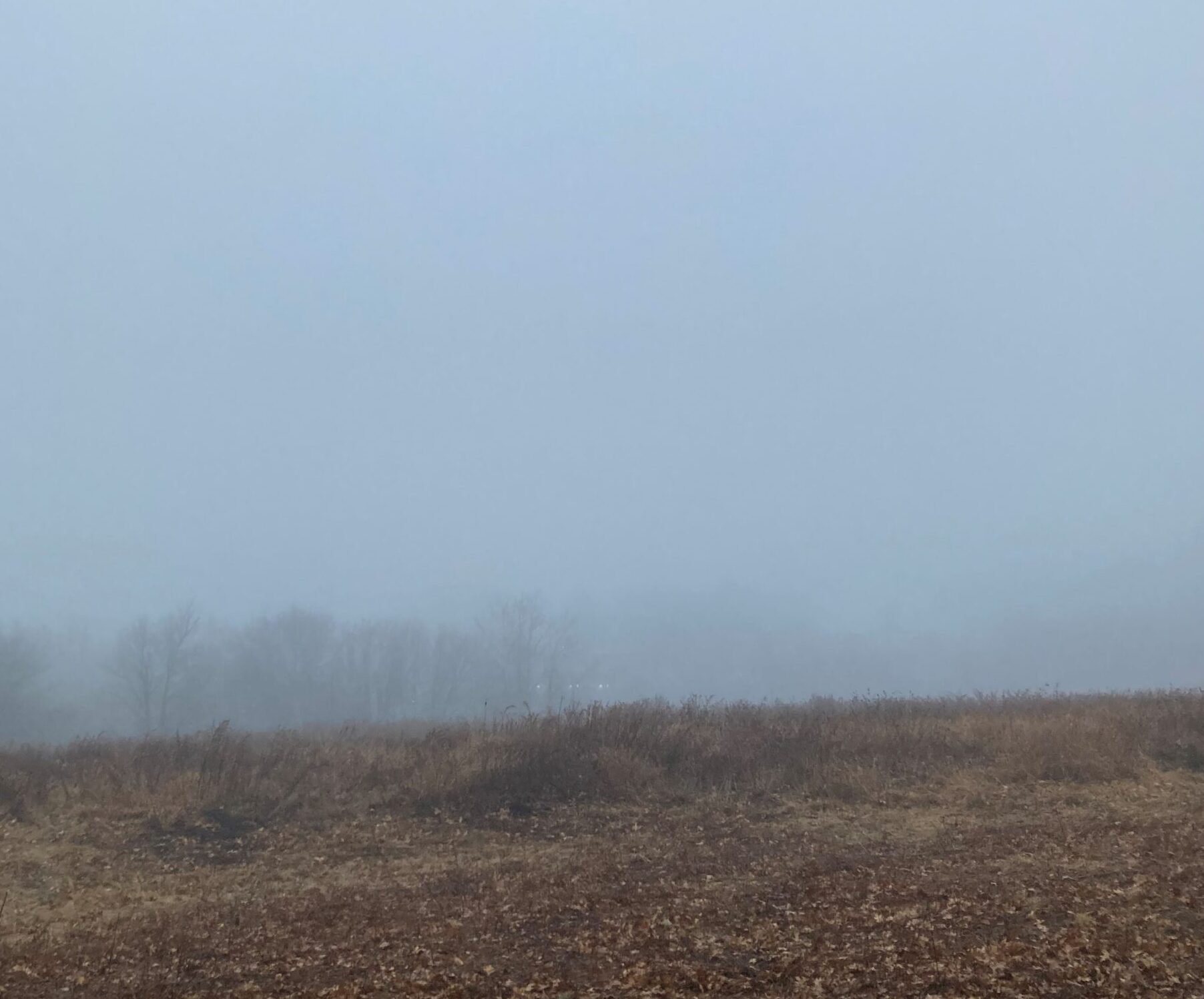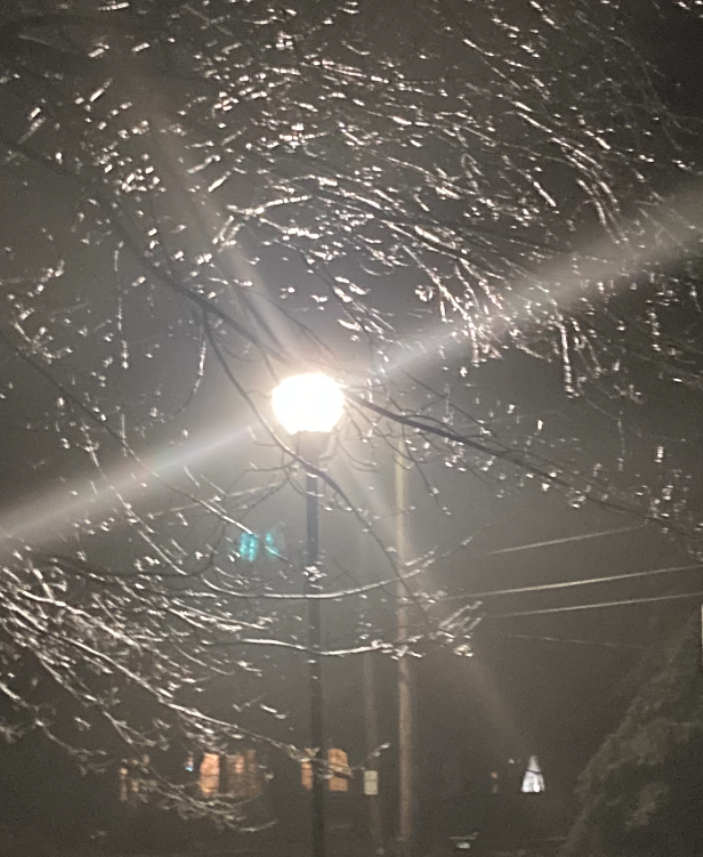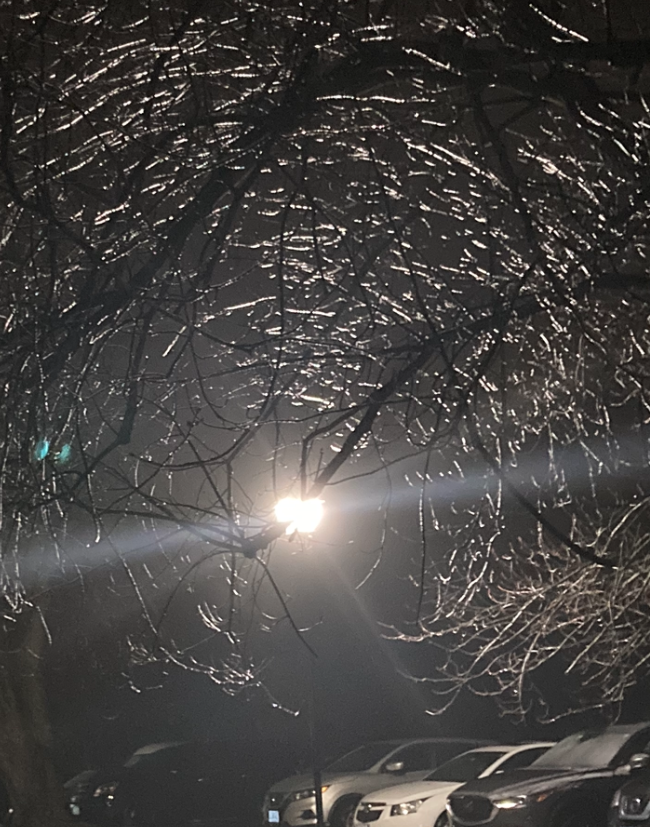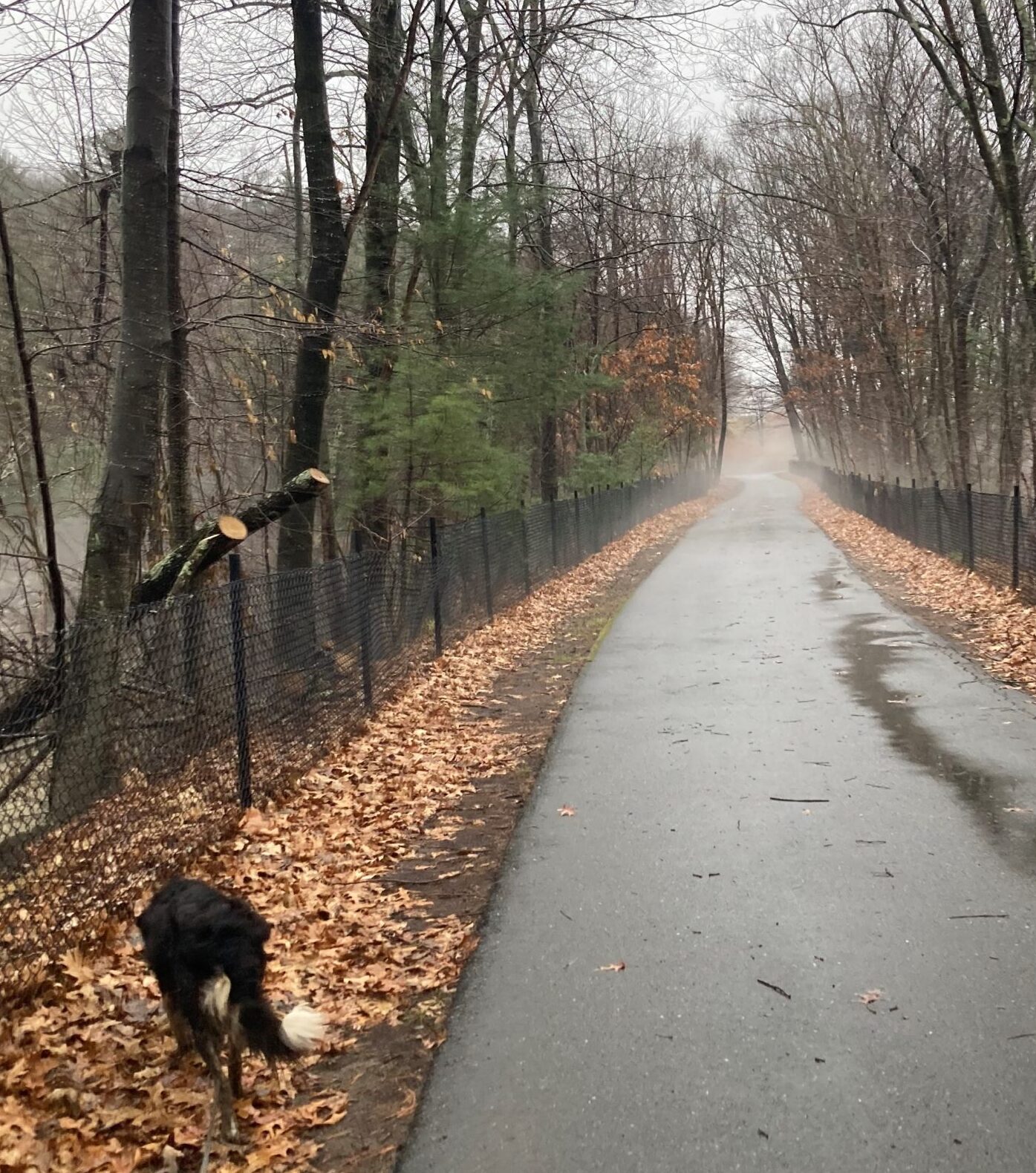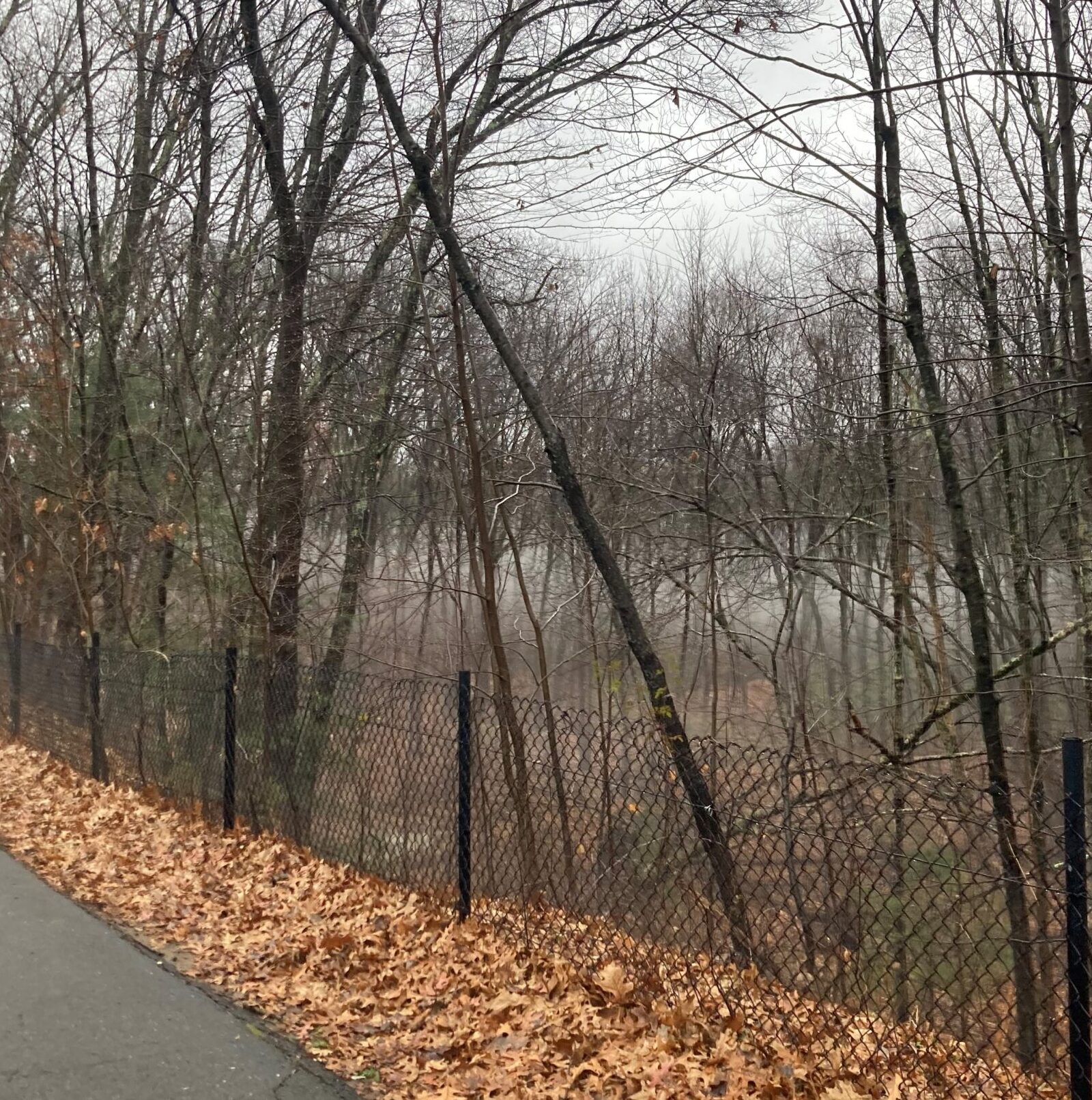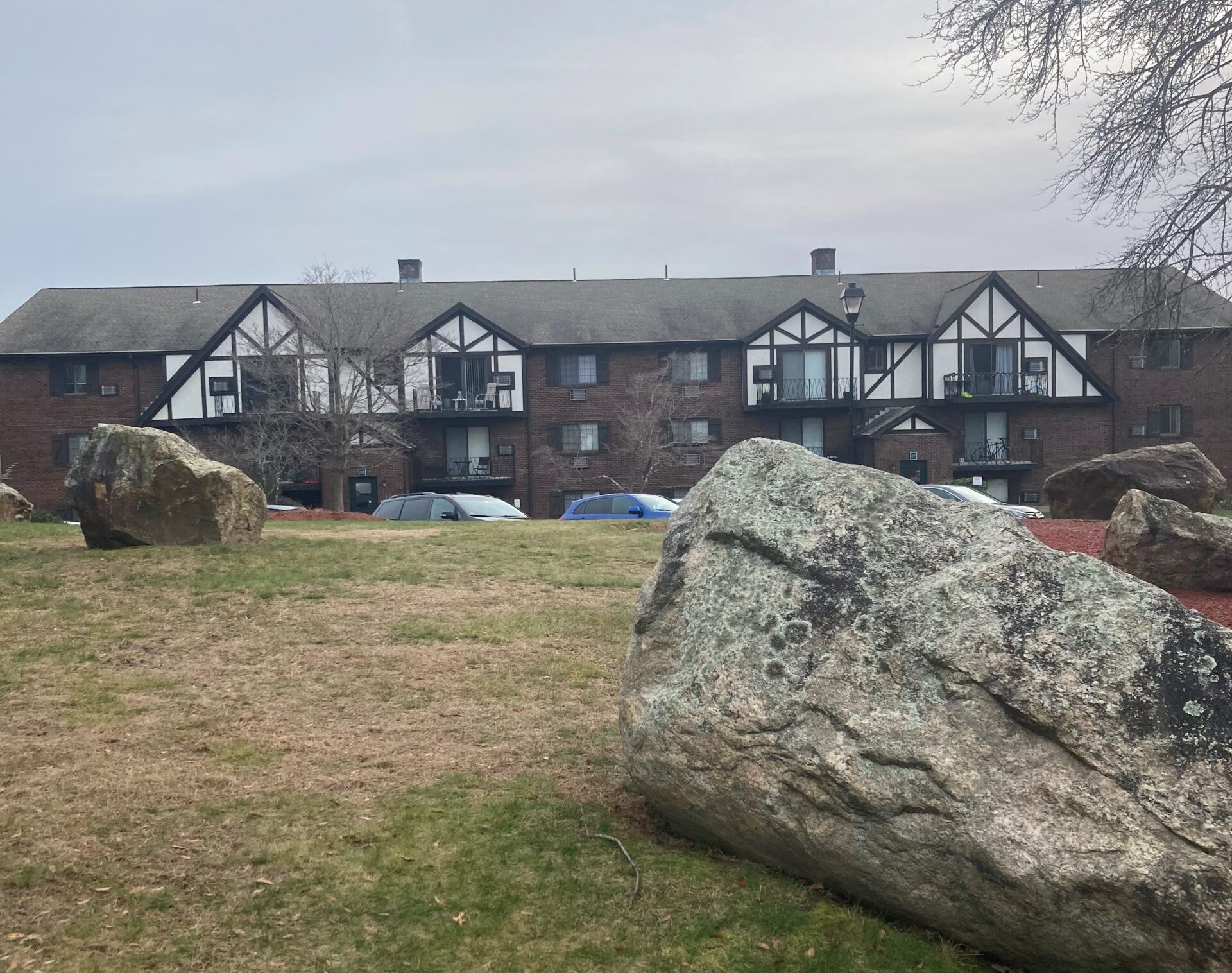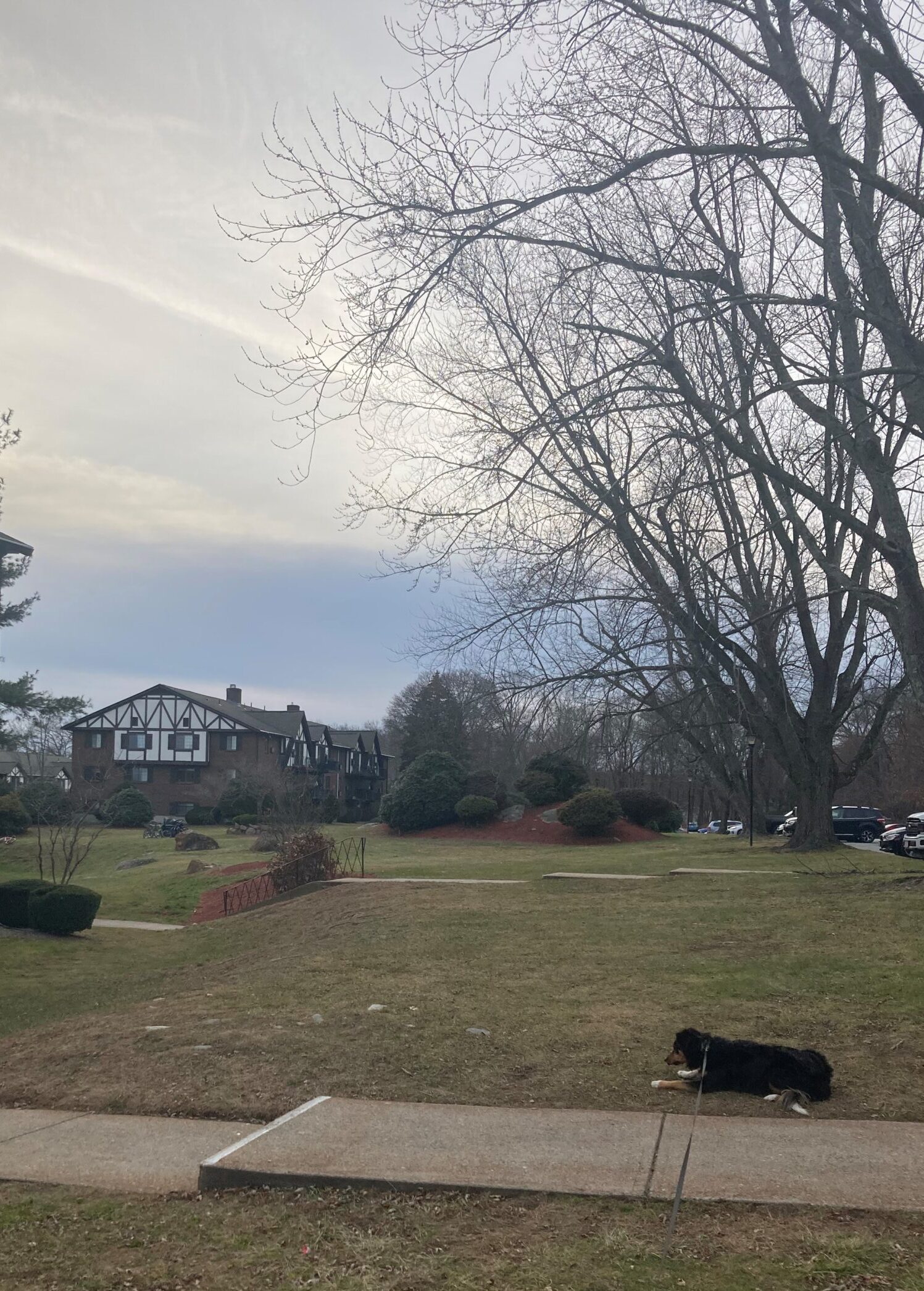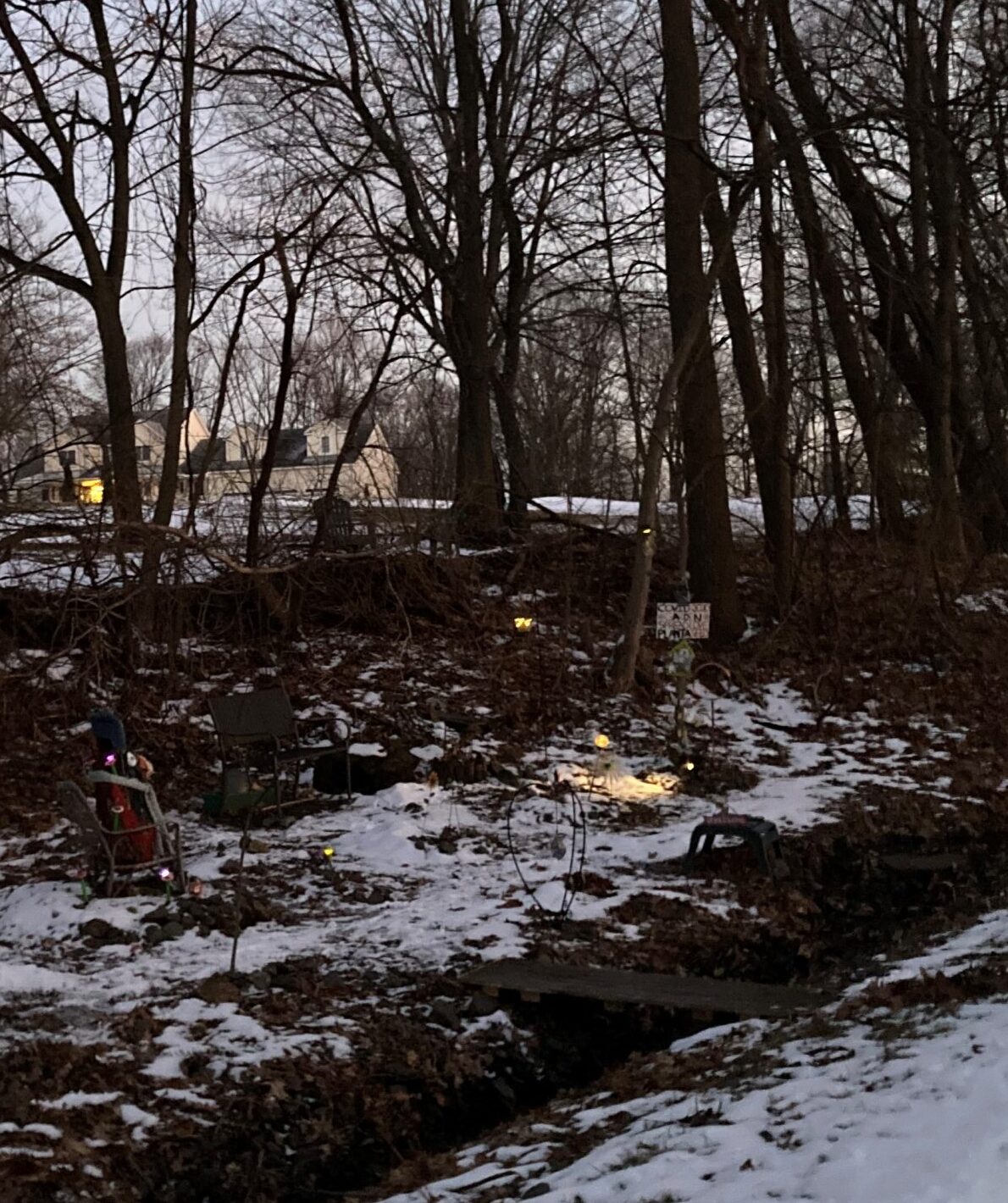
Covid Garden in twilight, lit up with solar batteries. In reality, it is darker than it appears here. The magic of cellphone cameras.
There is a pleasure in the pathless woods,
There is a rapture on the lonely shore,
There is society, where none intrudes,
By the deep sea, and music in its roar:
I love not man the less, but Nature more.
-Lord Byron
We got started on the rail-trail a little late today – 3 PM. That’s not a bad time of day to walk as it’s the warmest time of day. That’s something I look out for because the temperature now is around 10℉. The shadows lay a little longer on the tarmac, but they are always long this time of year, even at midday. There’s not much wind, which is a good thing as wind not only makes it feel colder, its teeth find ways to get past the insulation you swathe yourself with. Yesterday was a warm day, with highs in the thirties, and that served to make the omnipresent ice more walkable. Despite the late hour, which means we will be finishing our trek after sunset, I decide to go for the usual 6 miles. Waldo heartily agrees and surges forward to the end of the leash, urging me onward.
One can get lost in the vast stillness of a windless winter afternoon. Without the rustling of leaves, the buzzing of insects and the other sounds of the living world, there’s nothing for you YOUR mind to latch onto and your attention just floats out into the universe, wanders around in free-association and never congeals into coherent thought. This is not a bad thing at all. You experience the world and yourself, not in verbalized thought, but directly, one impression leading to another without stopping to objectify, define, solidify or evaluate. You are just present.
Several years ago, I was on a canoe trip on the Boundary Waters of upper Minnesota with my brother, two nephews and a grand-nephew. We chose to go in late August because there would be fewer bugs, most notably, fewer mosquitoes. I remember one day, paddling down a large lake, Lac La Croix, and I came to intimately know and understand the expression, “deafening silence.” There was not a breath of air. No waves slapped against the canoe or the shore. There was no insect drone, no birds calling, absolutely no sound at all. I felt like I imagine I would feel in a sensory deprivation tank, at least in terms of sound. It made me want to slap the water with the paddle just to reassure myself that I had not gone deaf. It was eerie and a little unsettling, as if, by hearing nothing, I lost contact with my world, and in a sense, my sanity.
Being on the rail-trail with Waldo is not nearly that still, that quiet. It could never be with a border collie dancing around, doing his doggy thing as he boldly goes where his senses lead him. But it is still enough in the winter that your grip on the tether that binds you to your usual world slips a bit, allowing Mother Nature to poke your soul with a finger of raw immediate experience. The brisk cold air, the stark boney BONY skeletons of bushes and trees, the whiteness that covers most everything, the slippery ground underfoot, the yellows and browns of decaying leaves and the fresh cold aroma of winter air washed clean by a recent storm all tickle at your awareness as if to say, “This is what is real, not that imaginary self-created world you think you live in.”
I would guess that anyone out in nature would get some of this feeling and it is likely what draws people out into the woods to camp and hike. Being retired, though, my mind is freer of thoughts and worries that beset me when I was still working. My cup is no longer full and can be filled with experiences I would not have paid as much attention to in the past. The piquancy of being out in nature is what amazes me, though. I spontaneously react to what I experience there with a profound sense of wonder, beauty, magic and reverence – even when it’s cold, blustery and slippery. The universe we live in is a truly amazing place and, I believe, under appreciated by most of us. If this were not so, we would all see to it that manmade climate change would never happen.
As we get within about 5/8 of a mile from returning to our car, it’s getting dark. We pass the Covid garden, now all bedecked with small glowing multicolored LED lights. It is small and somewhat barren due to the winter. There are a few people, whom I don’t know and have met only in passing, who have taken on the burden of keeping the garden in good shape. It was started in 2020 during the Covid lockdown and has slowly blossomed since. It now sports some small plastic windmills, several solar-powered lights, a chair and a bench to sit on, some imaginative artwork, as well as hibernating greenery that will display a variety of colorful flowers, come spring. I am not alone in appreciating the art and beauty that Mother Nature has given us and I see this garden as a celebration of it.
And then there’s Waldo. I look down at him as we return to the car. No doubt about it.
Waldo loves the outdoors more than any of us humans.


